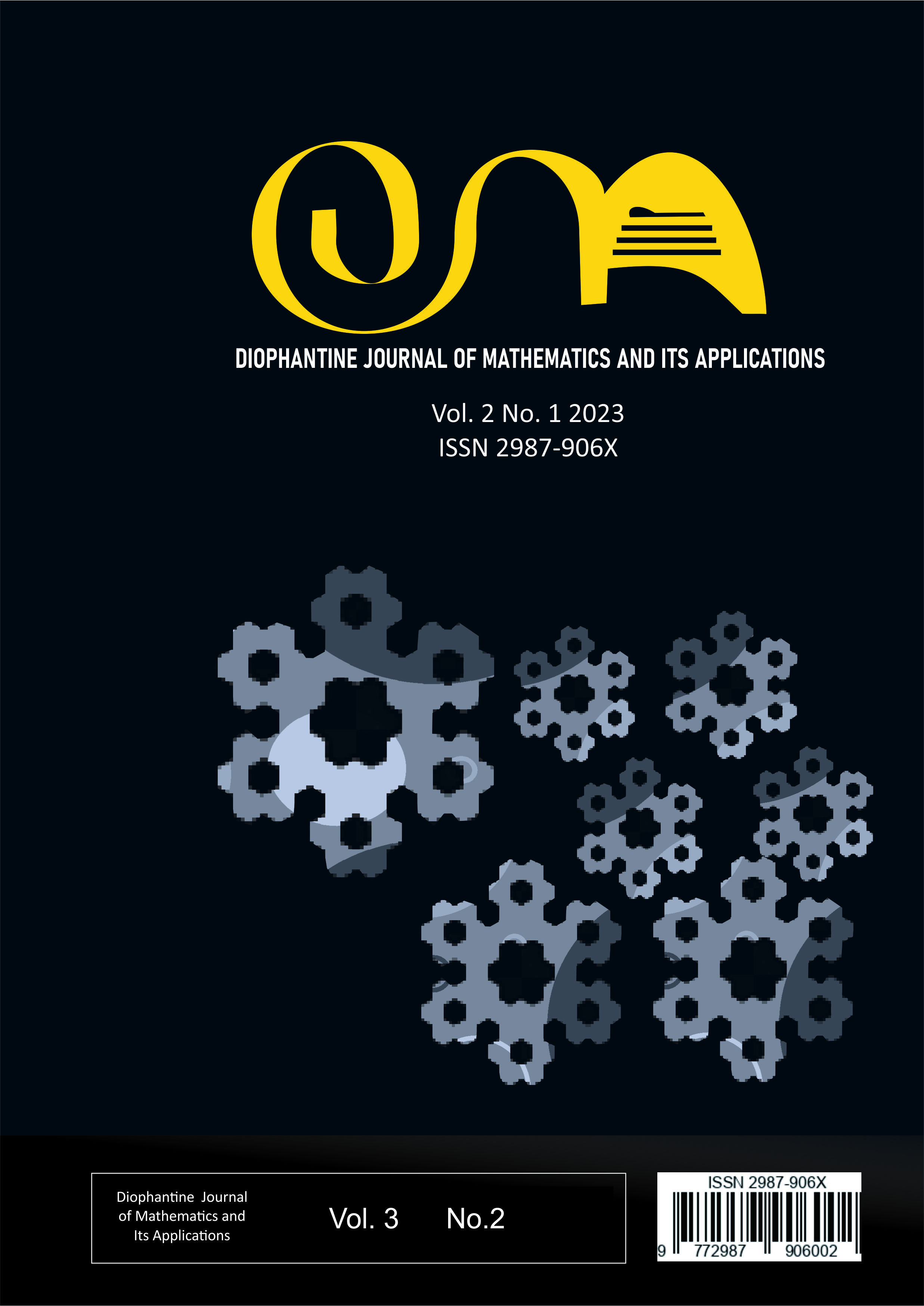Main Article Content
Abstract
The flood tracking model is a method that can be used to predict when a flood will occur. The flood wave model is developed using a diffusion equation consisting of mass conservation equations and momentum conservation equations. This research was conducted to determine the application of the Method of Lines (MOL) in solving flood tracking models using the diffusion equation. The steps involved are discretizing the flood wave diffusion tracking equation by replacing the spatial derivative using the central difference method, resulting in a system of ordinary differential equations. Then, solving the system of ordinary differential equations using the fourth-order Runge Kutta method. The approach used in this research is quantitative. Simulations are performed by inputting a sample case and entering the data into the MATLAB program. The flow discharge produced increases as the flow velocity increases, and the resulting graph becomes more concave as the velocity increases. Thus, by knowing the changes in flow velocity, flow width, and flow depth in the upstream area of the river, it can be predicted how much the water discharge will change at each observation point downstream of the river.
Article Details
Copyright (c) 2024 Istikomah, Yulian Fauzi, Rahmat Nursalim

This work is licensed under a Creative Commons Attribution 4.0 International License.
References
-
[1] Ponce, V.M. Engineering Hydrology: Principles and Practices. Englewood Cliffs, New Jersey : Prentice Hall, 1989.
[2] Tikno, S. Penerapan Metode Penelusuran Banjir (Flood Routing) untuk Program Pengendalian dan Sistem Peringatan Dini Banjir Kasus: Sungai Ciliwung. Jurnal sains dan Teknologi
Modfikasi Cuaca. Jawa Tengah: Universitas Diponegoro, 2002.
[3] Siing, M., and Widodo, B. Penyelesaian Model Matematika Penelusuran Banjir Gelombang Difusi (Diffusion Wave Flood Routing). Prosiding Seminar Nasional Penelitian, Pendidikan
dan Penerapan MIPA. Yogyakarta: Universitas Yogyakarta, 2011.
[4] Achmad, M. Hidrologi Teknik. Makasar: Universitas Hasanuddin, 2011.
[5] Novak, P., Guinot, V., Jeffrey, A., and Reeve, D.E. Hydraulic Modeling an Introduction. Principles, Methods and Application. New York: Spon Press, 2010.
[6] Rima, L. Analisis Model Penelusuran Banjir Gelombang Difusi dengan Metode Dufort-Frankel. Skripsi. Jember: Universitas Jember, 2015.
[7] Zauderer, E. Partial Differential Equations of Applied Mathematics Third Edition. New York: John Wiley & Sons, Inc, 2006.
[8] Pregla, R. Analysis of Electromagnetic Fields and Waves: The Method of Lines. England: John Wiley and Sons, Ltd, 2008.
[9] Hamdi, S., Schiesser, W.E., and Griffiths, G.W. Method of Lines. San Diego: Scholarpedia, 2009.
[10] Campo, Antonio, and Marucho, D.M. Approximate, Semi Analytic Solution of the Graetz-Nusselt Problem: Method of Lines. Journal of Thermophysics and Heat Transfer. 32(28), 1–6, 2017.
References
[2] Tikno, S. Penerapan Metode Penelusuran Banjir (Flood Routing) untuk Program Pengendalian dan Sistem Peringatan Dini Banjir Kasus: Sungai Ciliwung. Jurnal sains dan Teknologi
Modfikasi Cuaca. Jawa Tengah: Universitas Diponegoro, 2002.
[3] Siing, M., and Widodo, B. Penyelesaian Model Matematika Penelusuran Banjir Gelombang Difusi (Diffusion Wave Flood Routing). Prosiding Seminar Nasional Penelitian, Pendidikan
dan Penerapan MIPA. Yogyakarta: Universitas Yogyakarta, 2011.
[4] Achmad, M. Hidrologi Teknik. Makasar: Universitas Hasanuddin, 2011.
[5] Novak, P., Guinot, V., Jeffrey, A., and Reeve, D.E. Hydraulic Modeling an Introduction. Principles, Methods and Application. New York: Spon Press, 2010.
[6] Rima, L. Analisis Model Penelusuran Banjir Gelombang Difusi dengan Metode Dufort-Frankel. Skripsi. Jember: Universitas Jember, 2015.
[7] Zauderer, E. Partial Differential Equations of Applied Mathematics Third Edition. New York: John Wiley & Sons, Inc, 2006.
[8] Pregla, R. Analysis of Electromagnetic Fields and Waves: The Method of Lines. England: John Wiley and Sons, Ltd, 2008.
[9] Hamdi, S., Schiesser, W.E., and Griffiths, G.W. Method of Lines. San Diego: Scholarpedia, 2009.
[10] Campo, Antonio, and Marucho, D.M. Approximate, Semi Analytic Solution of the Graetz-Nusselt Problem: Method of Lines. Journal of Thermophysics and Heat Transfer. 32(28), 1–6, 2017.
